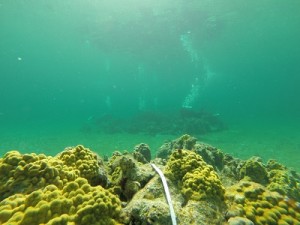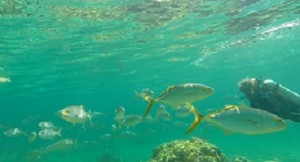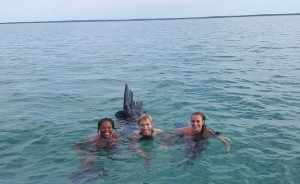
March weather was perfect for the lionfish team as they visited 16 different patch reef sites for their quarterly surveys, observing fish species and abundance in relation to the presence of lionfish. Of the 16 sites, we remove lionfish from 8 of them every 3 months, comparing the removal reefs with nonremoval reefs as a way to measure the impact of lionfish on the patch reef systems.

At each patch all of the fish species present on the reef are counted for their relative abundance, especially the lionfish. Fish that compete for resources with lionfish, such as grunts, snapper, and grouper, are specifically noted along with their total body lengths. In addition to the roving survey and competitor observations, we also collected data on invertebrates, grouper, and parrotfish for three other studies. We counted the number of spiny lobster, queen conch, sea stars, sea urchins, and sea cucumbers on the reefs to add to a data set that will be part of an assessment for implementing a potential marine protected area.

Throughout the course of the week of collecting data we saw an abundance of reef creatures, but most notably three nurse sharks, a large school of yellow jacks, a big eye which has remained on the same patch for over a year and is not commonly found on patch reefs, as well as a hawksbill sea turtle, also rarely sighted on these patches because they are critically endangered.
This week we look forward to dissecting the 22 lionfish that we collected from the removal sites to gather data on each fish, particularly which reef fish they have predated on.
Also, check out this video of the dives: